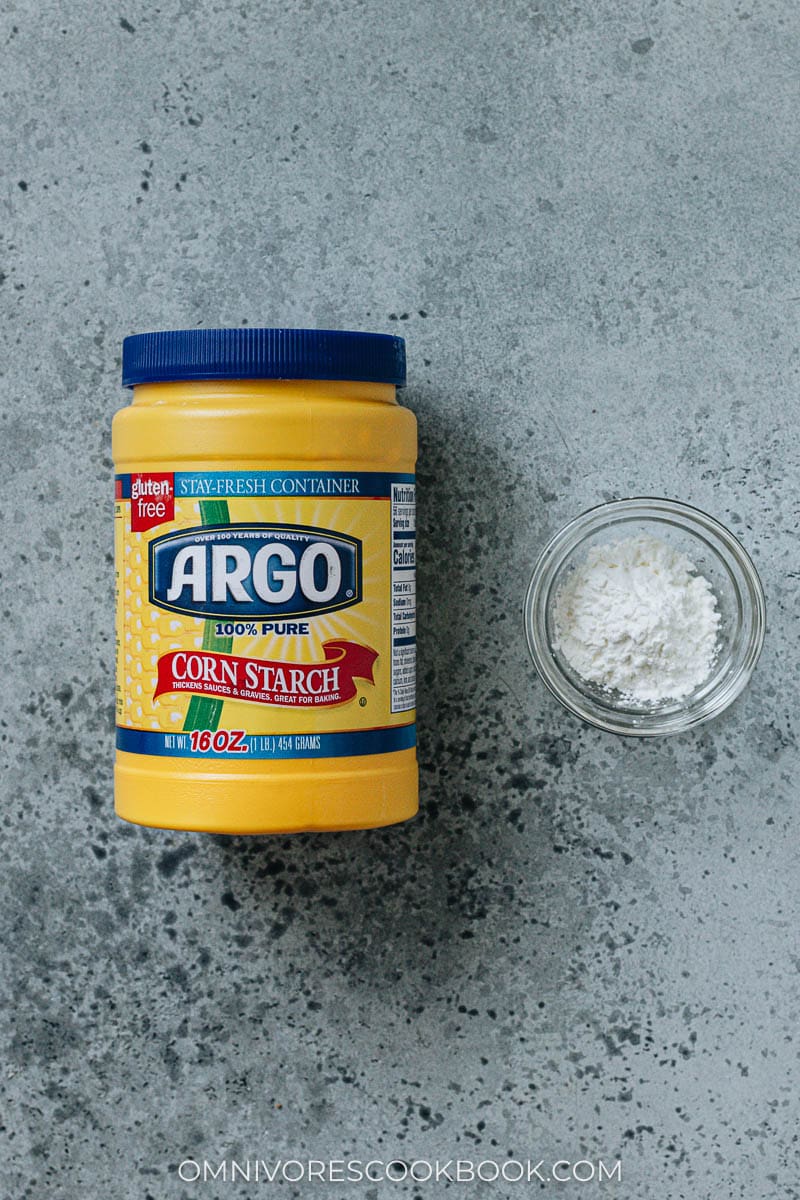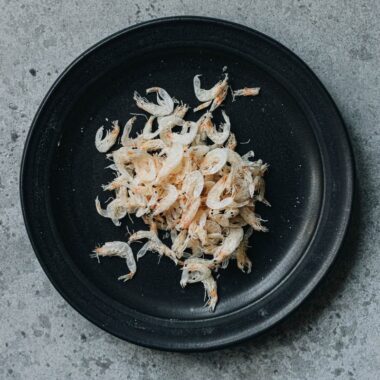
Starch (淀粉, dian fen), such as corn starch, bean starch, potato starch and wheat starch, is one of the most important ingredients in Chinese cooking. Starch has two main purposes in the Chinese kitchen, besides blending into flour or making pastries.
- It serves as a meat tenderizer when added to a marinade.
- It becomes a sauce thickener when mixed with water.
For Marinades
There are two techniques in Chinese cooking that use starch to keep meat / poultry / seafood moist and tender.
(1) Coat a thin layer of dry starch on the item before cooking (挂糊, gua hu)
Mainly used for fried dishes. The ingredient is coated with starch right before cooking.
(2) mix cornstarch with liquid condiments to make a slurry to coat the meat before cooking (上浆, shang jiang).
Used in stir-fry and frying. The starch is usually blended with liquid ingredients, such as soy sauce, and cooking wine, along with ginger or garlic, 10 to 15 minutes before cooking. By using one’s hand to mix the slurry with the meat, the mixture will turn to a thin and slightly sticky slurry to coat the protein. The protein will absorb the flavor from the marinade, and the cornstarch will help with tenderize the meat.
Either way, the starch will protect the food from touching the hot oil directly and lock the moisture inside, thus resulting in tender meat.
Be careful when you coat meat with starch or starch water, as the starch can very easily stick to the skillet. You should add a bit more oil and carefully swirl the skillet so that oil covers every inch of the skillet.
You can refer to the recipes below to see how to use cornstarch in a marinade:
Beef Chow Fun with Chinese Broccoli
Thai Curry Chicken Fried Rice
Black Pepper Steak
To Thicken Sauce
Dissolve starch in water and add the mixture at the end of cooking. Starch water will change into a transparent sticky liquid when the temperature reaches 60 degrees C (140 F), thus making the sauce thicker within a minute and helping it coat the ingredients better. It also looks shiny and makes the dish visually appealing. The other classic use of starch water is to thicken soup, for example, hot and sour soup. The soup will have a silky mouthfeel as a result.
A Few Things to Note:
- Do not cook cornstarch water over excessively high heat, as the slurry will cook too quickly and clot into small chunks before it can thicken the sauce. For stir-fry, you should turn to lowest heat before adding the mixture, and stir immediately after the mixture is added.
- Do not add too much cornstarch. The sauce will turn to a jelly and have a bad, powdery taste.
- Mix starch water multiple times, until the starch is fully dissolved, before adding to a dish. The starch will easily separate from the water and sink to the bottom, if the mixture sits still on the kitchen counter for a few minutes.



